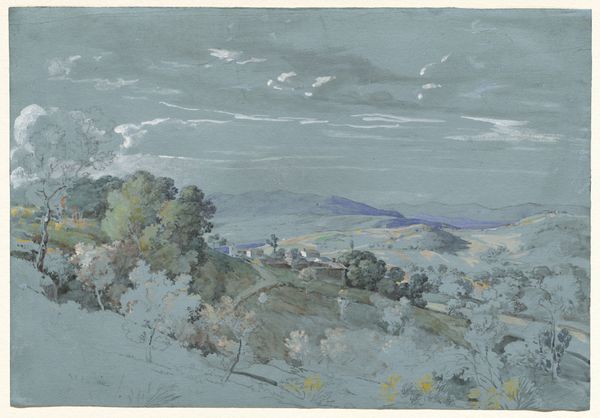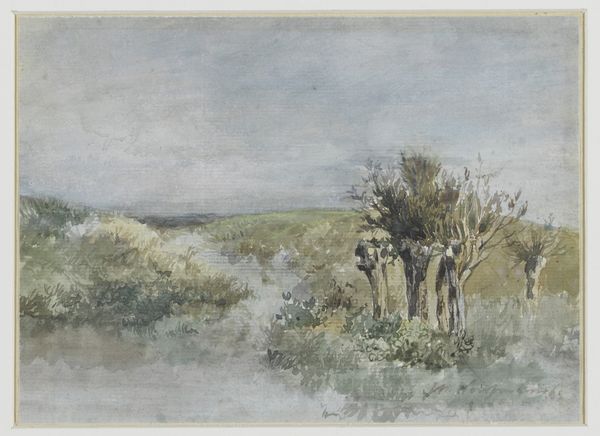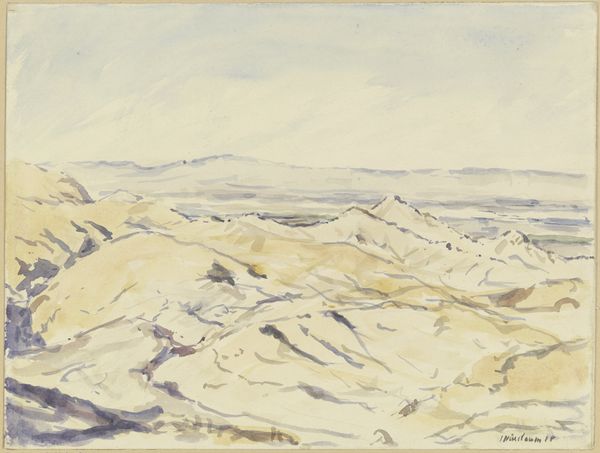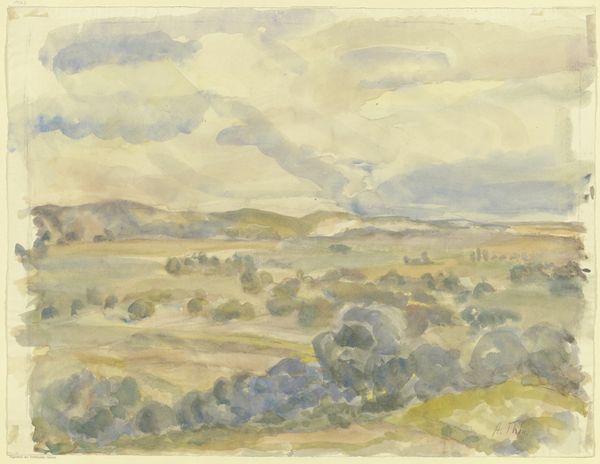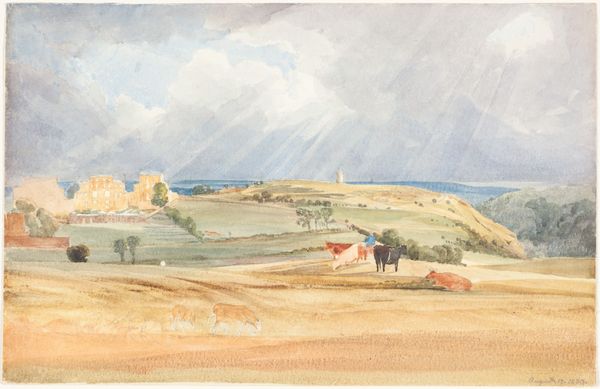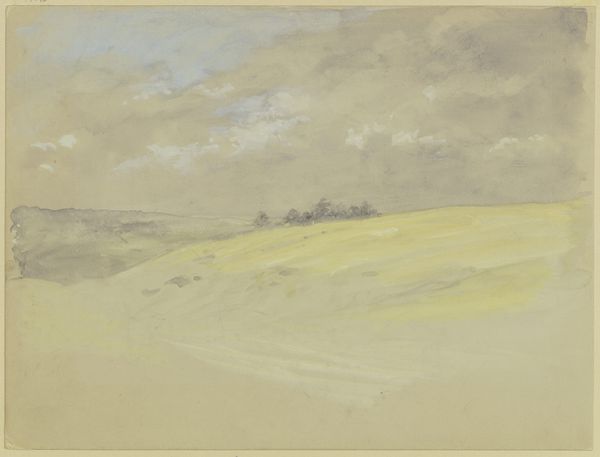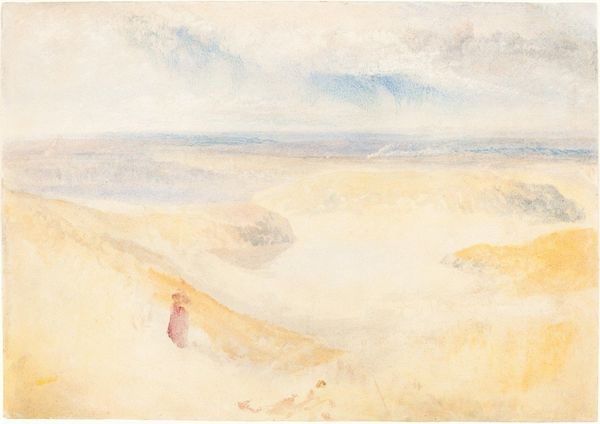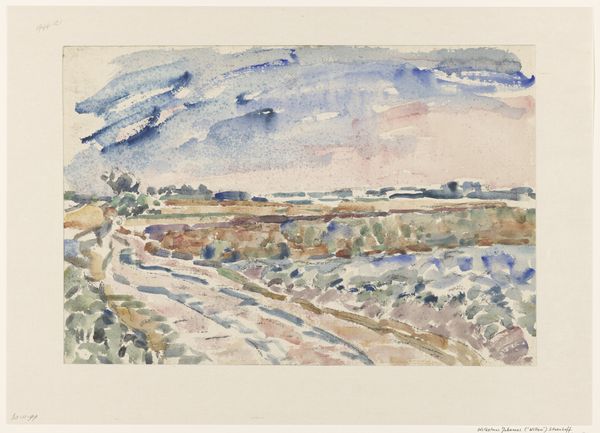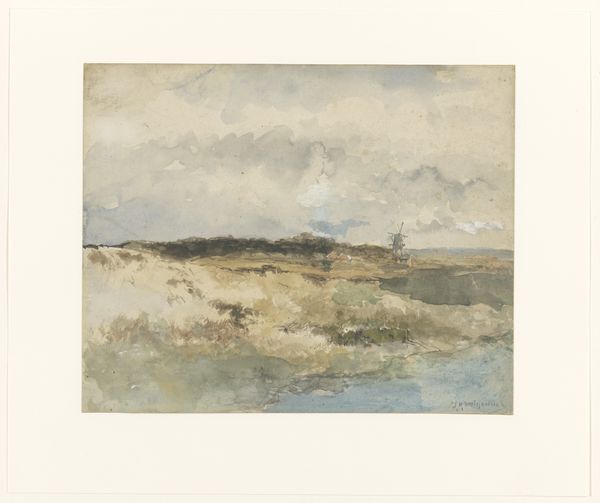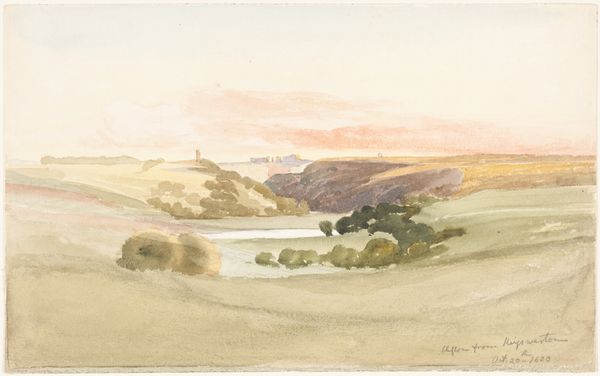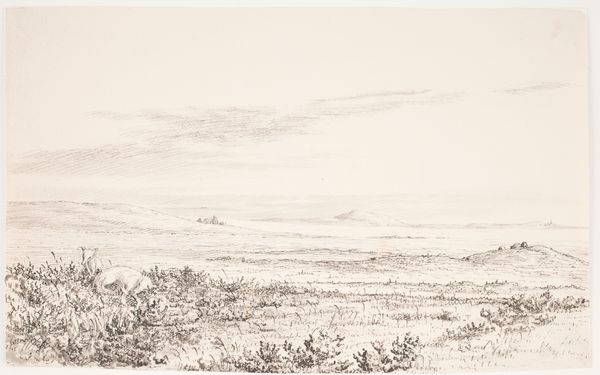
drawing, painting, plein-air, watercolor
#
drawing
#
painting
#
plein-air
#
landscape
#
nature
#
watercolor
#
romanticism
#
nature
#
natural environment
#
watercolor
#
realism
Dimensions: Overall: 14.5 x 13.6 cm (5 11/16 x 5 3/8 in.) mat: 35.6 x 27.9 cm (14 x 11 in.)
Copyright: National Gallery of Art: CC0 1.0
Curator: Here we have "A Heath in Sussex," a watercolor created by William Collins between 1810 and 1815. It beautifully encapsulates the serene and somewhat melancholic beauty of the English countryside. Editor: My initial reaction is a quiet stillness. The soft washes of color give it a dreamlike quality. The land seems to breathe quietly under a vast, pale sky. It also strikes me as surprisingly minimal, almost modern in its restraint. Curator: Absolutely. Collins was known for his detailed yet evocative landscapes, very much in line with the Romantic movement’s focus on nature. His plein-air paintings aimed to portray a specific locale, but also tap into feelings, especially in representing natural environments available to a burgeoning art market and national consciousness. Editor: The scene is simple but effective. The painting captures a wide vista of what appears to be farmland with a central large mound shape, offering an intriguing tension between agriculture and more “wild” or untamed landscapes. Considering how landscape art played a pivotal role in shaping British national identity, this artwork begs further inspection of how it imagines this identity. Who does it include, and equally importantly, who does it leave out? The rural landscapes depicted in this time can reinforce nostalgic views, which is why scrutinizing them with contemporary social concerns becomes vital. Curator: That’s a really vital point. Collins came from a London background, he found a market for representing an agricultural arcadia; he did focus particularly on laborers. There is not evidence in this painting, it is a peaceful composition offering no particular social commentary or labor activity. Editor: Yes, and while peaceful, perhaps too peaceful. I look for evidence of lives. The almost sanitized depiction of nature can perpetuate narratives that exclude and simplify the complexity of human experiences with nature. It serves to ask—Whose vision is truly represented? How do race, gender and class shape experiences within landscapes? Curator: In summary, it offers us insight into how Collins negotiated a social reality in the early 19th Century landscape. Editor: It reminds me that while this scene speaks of beauty and tranquility, we also must engage critically with whose tranquility and beauty is privileged.
Comments
No comments
Be the first to comment and join the conversation on the ultimate creative platform.
